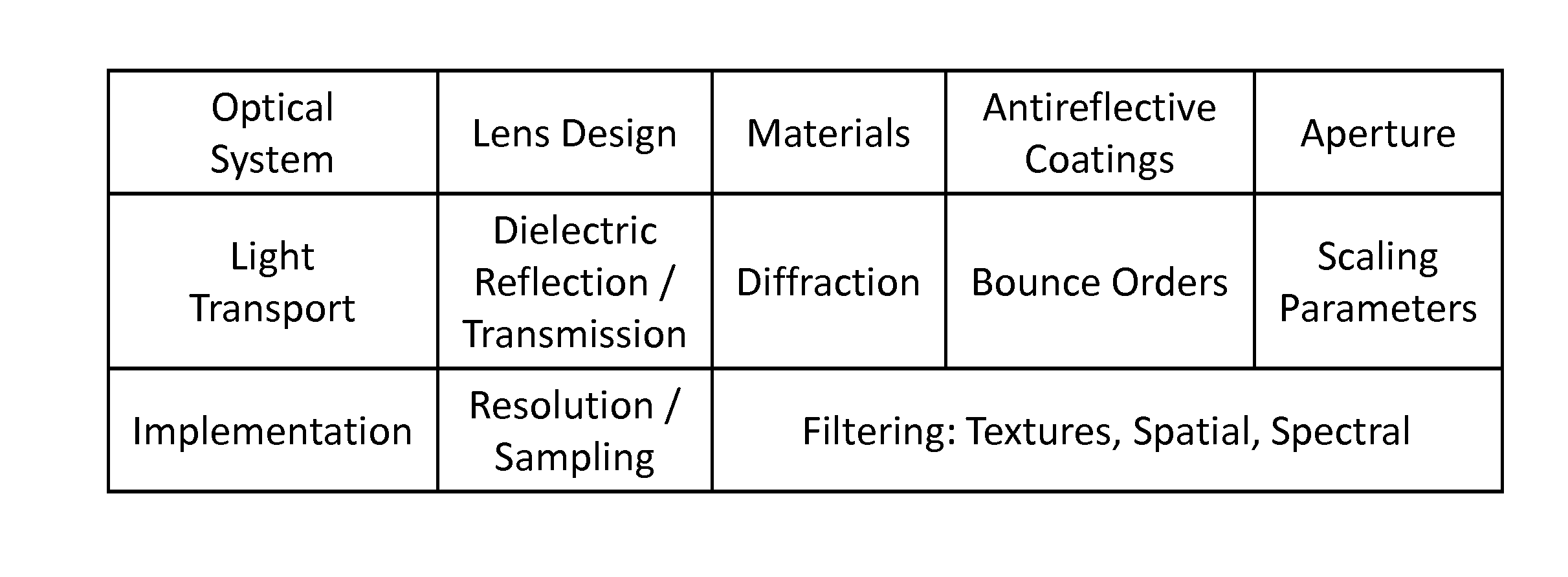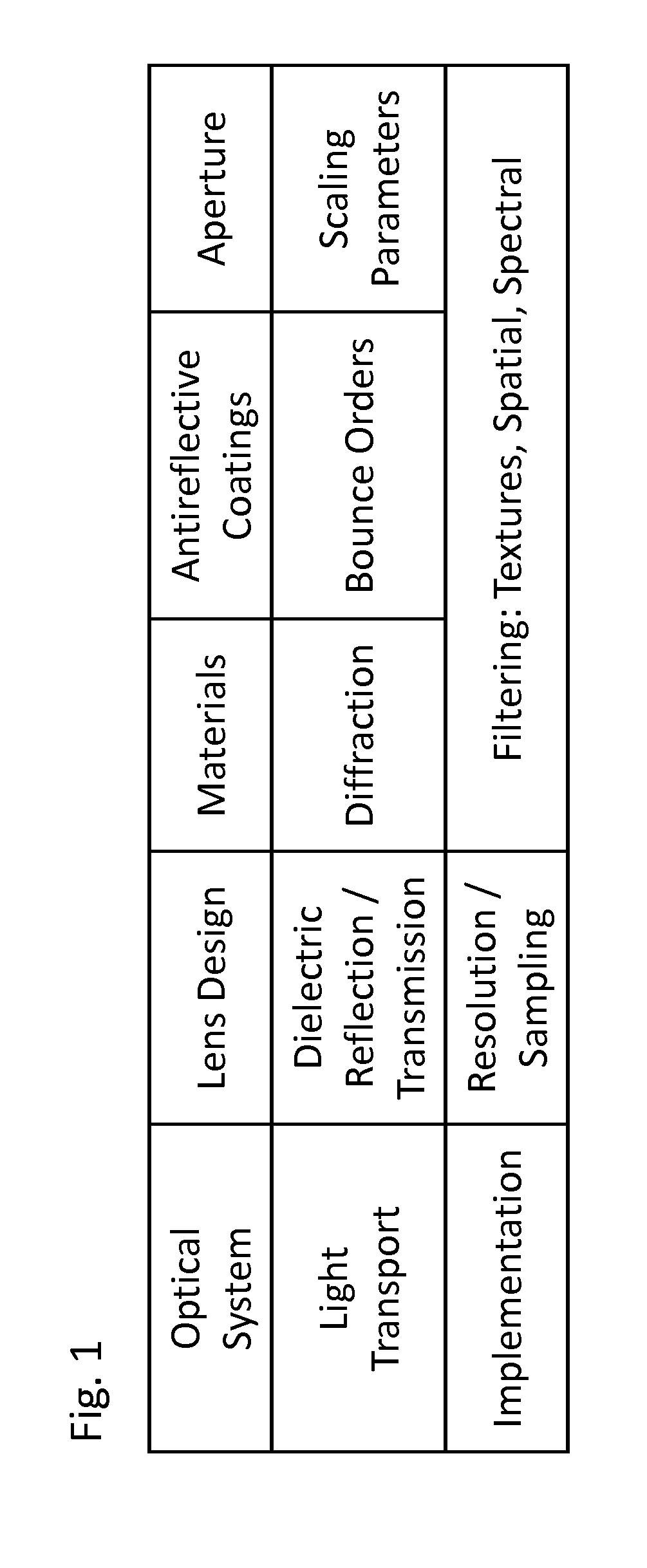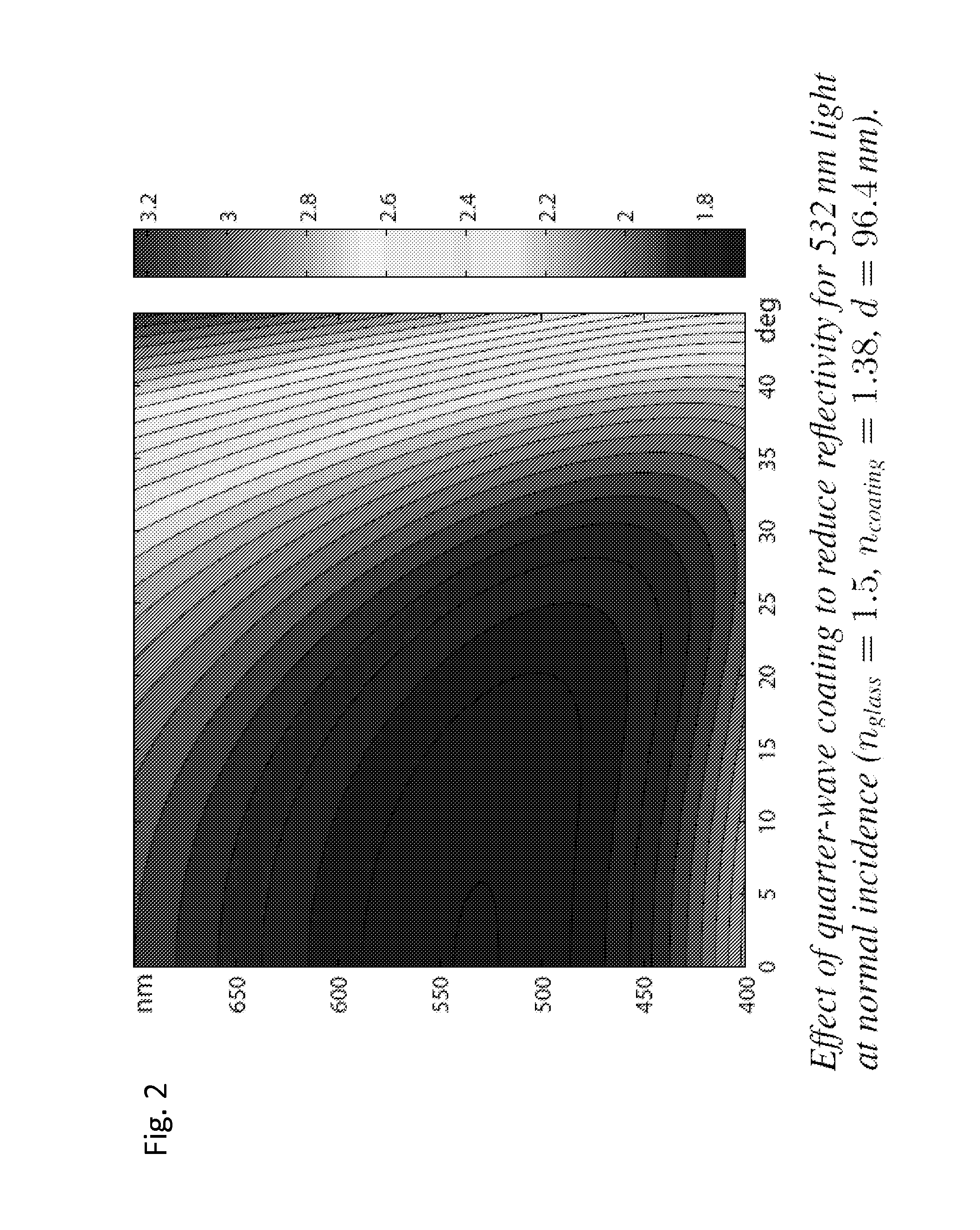Method and system for real-time lens flare rendering
a real-time lens and rendering technology, applied in the field of real-time lens flare rendering, can solve the problems of insufficient visual quality for small computation time, inability to interact (e.g., zooming), etc., and achieve the effect of efficient rendering of realistic lens flares
- Summary
- Abstract
- Description
- Claims
- Application Information
AI Technical Summary
Benefits of technology
Problems solved by technology
Method used
Image
Examples
Embodiment Construction
[0022]The main idea behind the inventive technique is not only to consider individual rays, but to exploit a strong coherence of rays within lens flare, in the sense of choosing rays underlying the same interactions with the optical system.
[0023]FIG. 1 is a block diagram showing different aspects of optical systems considered by the invention. Generally, an optical system may comprise lenses and an aperture, each lens having a specific design, material and possibly, coating. Light propagation is governed by light transmission, and reflection at the set of lens surfaces and characteristic planes (entrance, aperture and sensor plane).
[0024]Specific lens designs of a given optical system may be modeled geometrically as a set of algebraically defined surfaces, i.e., spheres and planes. In terms of materials or optical media, it is sufficient for a method according to the present embodiment of the invention to consider perfect dielectrics with a real-valued refractive index. All optical ...
PUM
 Login to View More
Login to View More Abstract
Description
Claims
Application Information
 Login to View More
Login to View More - R&D
- Intellectual Property
- Life Sciences
- Materials
- Tech Scout
- Unparalleled Data Quality
- Higher Quality Content
- 60% Fewer Hallucinations
Browse by: Latest US Patents, China's latest patents, Technical Efficacy Thesaurus, Application Domain, Technology Topic, Popular Technical Reports.
© 2025 PatSnap. All rights reserved.Legal|Privacy policy|Modern Slavery Act Transparency Statement|Sitemap|About US| Contact US: help@patsnap.com



